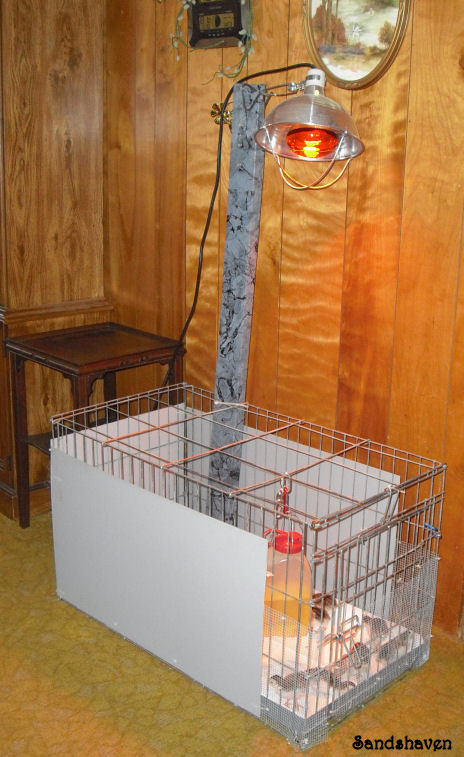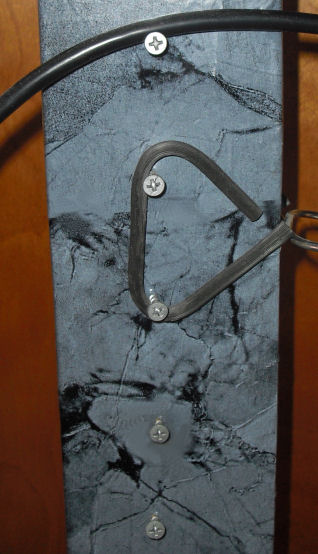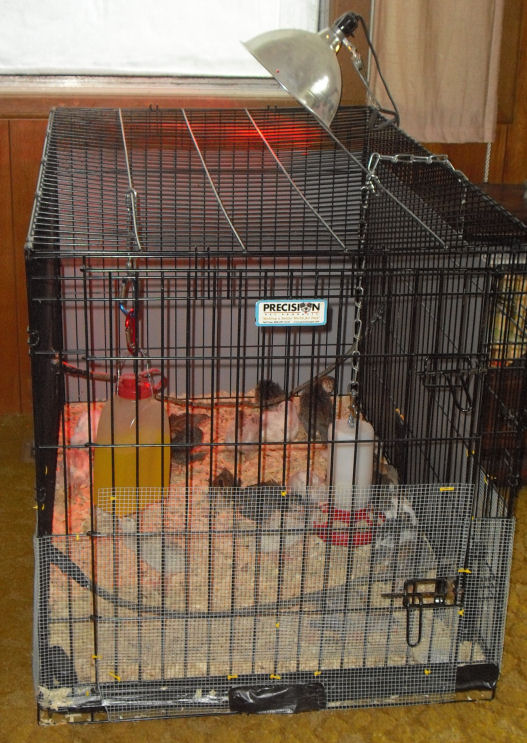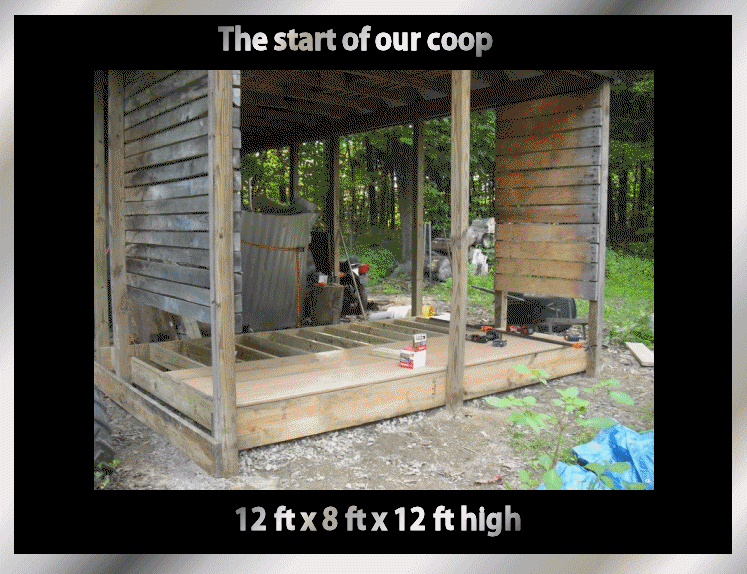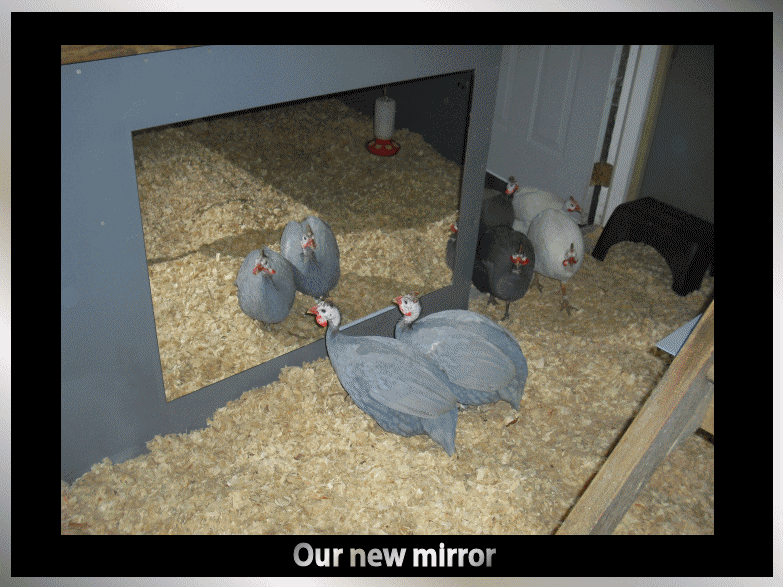

The Brooder Their 1st home
When you first bring home your keets you will need a brooder with a heat lamp. It is best to have the brooder ready before bringing home your keets.
Brooders are made of many kinds of materials. Cardboard boxes, cages, plastic totes, wooden crates, etc. The list goes on and on... Our Brooder
We use a modified cage for our brooder. Adding 3 plastic sides to keep down drafts. And leaving the top open for better access & ventilation. We wrapped the front of the cage in 1/4" wire fencing.
While keeping the brooder on the floor. We believe the see-thru front helps our keets bond with the family.
We use an infrared heat lamp. Infrared bulbs help promote healthier sleep patterns..
We adjust the temperature of the brooder by moving the light up and down the post. Guinea keets require being kept at 95°F for the first week. Dropping 5°F each week there after till fully feathered.
A guinea is not fully feathered till they are 6 weeks old.
When your keets are little. They require non-slip flooring. We like the rubberized shelf liner but we have also used paper towels.
In your cage you will need a feeder and a waterer. We always use a water nipple system.
It is also a good idea to have a thermometer. And all keets love a mirror. They know they are pretty birds....
As your keets grow so must your brooder.
We move to a larger cage.
Adding a couple branches and switching over to a hanging feeder.
We still use a water nipple drinker. We add a cup for chick grit.
We also change our flooring to a thick layer of pine chips.
* Never use cedar chips *
The Coop Their permanent home
Your coop should be safe, dry and draft free.
We try to use material that is easy to clean and disinfect.
We designed it for the comfort of our birds.
But also for our convenience and comfort.
We spend a lot of time training our Autistic Support Flocks.
In the first year alone... We have 1,476 documented / recorded hours.
During that time we have modified our coop for different reasons.
Please join me on a tour of our Guinea Inn.
Sandshaven's Guinea Inn
What we modified since our last update...
We added more feed & water nipple drinkers.
Re-vamped the coop tools.
Gave them a studio mirror.
And we added a sandstone to the run.
But our biggest and best change.
The Poop Shelf
We removed the leaning hiding space. Added a horizontal poop shelf under their roosting ladder.
That modification saves me hours of cleaning.
It is amazing how much poo these birds can drop over night.
Now the poop shelf just covers the roosting area.
I still use my coop cleaner/grabber to grab droppings as I fluff up the pine chips.
And yes, I do that daily if not two or three times a day.
Right now... I am sure people are saying..
Crazy Lady
Maybe?
But I do have my 5 reasons.
1. A clean enviroment = healthy birds.
2. Daily cleaning helps to monitor for sickness.
You can tell a lot about your birds health by their droppings.
3. A great way to look for eggs.
My birds expect me to fluff their chips.
They really believe I am room service.
A story for Facebook.
4. Guineas love clean fluffed chips.
5. happy guineas = a happy me :)
Suggested Floor Space for Raising Guinea Fowl.
per bird
1 day to 2 weeks - 1/2 sq. ft.
3 to 5 weeks - 3/4 sq. ft.
6 weeks - 1 sq. ft.
7 weeks - 1 1/2 sq. ft.
8 weeks - 1 3/4 sq. ft.
9 weeks - 2 1/4 sq. ft.
10 weeks - 2 3/4 sq. ft.
11 weeks - 3 1/4 sq. ft.
12 weeks & up - 4 sq. ft
* Bio-Security
* Feed * Barnyard * Our Flock *
Shelter * Therapy * Training *
* Home * About Us *
Barnyard * Fiber Flingers *
Gallery *
Shoppe * Links *
Woodlands
* Contact Us *
Copyright © 2002-2026 Sandshaven All rights reserved 
